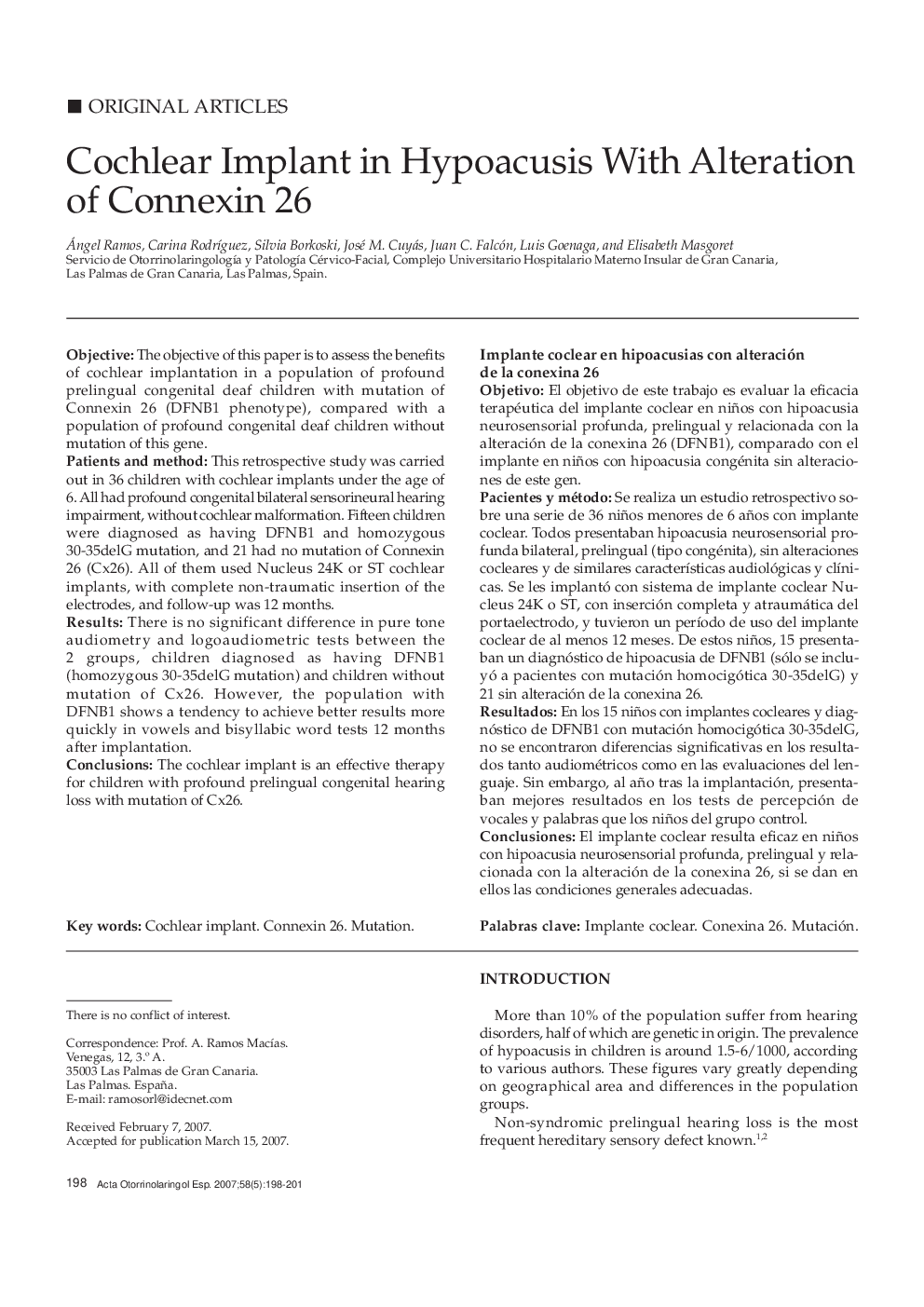| Article ID | Journal | Published Year | Pages | File Type |
|---|---|---|---|---|
| 4101567 | Acta Otorrinolaringologica (English Edition) | 2007 | 4 Pages |
ObjectiveThe objective of this paper is to assess the benefits of cochlear implantation in a population of profound prelingual congenital deaf children with mutation of Connexin 26 (DFNB1 phenotype), compared with a population of profound congenital deaf children without mutation of this gene.Patients and methodThis retrospective study was carried out in 36 children with cochlear implants under the age of 6. All had profound congenital bilateral sensorineural hearing impairment, without cochlear malformation. Fifteen children were diagnosed as having DFNB1 and homozygous 30–35delG mutation, and 21 had no mutation of Connexin 26 (C × 26). All of them used Nucleus 24 K or ST cochlear implants, with complete non-traumatic insertion of the electrodes, and follow-up was 12 months.ResultsThere is no significant difference in pure tone audiometry and logoaudiometric tests between the 2 groups, children diagnosed as having DFNB1 (homozygous 30–35delG mutation) and children without mutation of C × 26. However, the population with DFNB1 shows a tendency to achieve better results more quickly in vowels and bisyllabic word tests 12 months after implantation.ConclusionsThe cochlear implant is an effective therapy for children with profound prelingual congenital hearing loss with mutation of C × 26.
ObjetivoEl objetivo de este trabajo es evaluar la eficacia terapéutica del implante coclear en niños con hipoacusia neurosensorial profunda, prelingual y relacionada con la alteración de la conexina 26 (DFNB1), comparado con el implante en niños con hipoacusia congénita sin alteraciones de este gen.Pacientes y métodoSe realiza un estudio retrospectivo sobre una serie de 36 niños menores de 6 años con implante coclear. Todos presentaban hipoacusia neurosensorial profunda bilateral, prelingual (tipo congénita), sin alteraciones cocleares y de similares características audiológicas y clínicas. Se les implantó con sistema de implante coclear Nucleus 24 K o ST, con inserción completa y atraumática del portaelectrodo, y tuvieron un período de uso del implante coclear de al menos 12 meses. De estos niños, 15 presentaban un diagnóstico de hipoacusia de DFNB1 (sólo se incluyó a pacientes con mutación homocigótica 30–35delG) y 21 sin alteración de la conexina 26.ResultadosEn los 15 niños con implantes cocleares y diagnóstico de DFNB1 con mutación homocigótica 30–35delG, no se encontraron diferencias significativas en los resultados tanto audiométricos como en las evaluaciones del lenguaje. Sin embargo, al año tras la implantación, presentaban mejores resultados en los tests de percepción de vocales y palabras que los niños del grupo control.ConclusionesEl implante coclear resulta eficaz en niños con hipoacusia neurosensorial profunda, prelingual y relacionada con la alteración de la conexina 26, si se dan en ellos las condiciones generales adecuadas.
